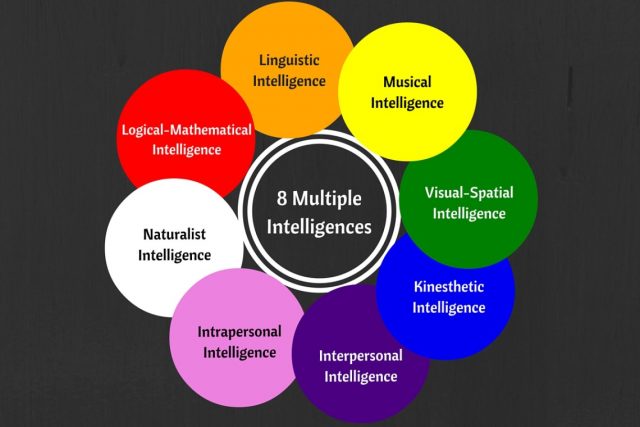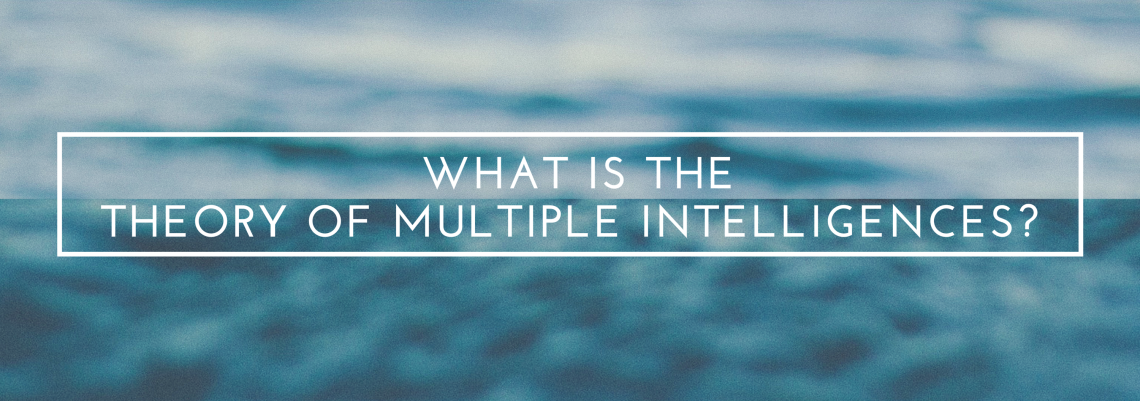Multiple Intelligences is a theory which was developed in the 1980’s by Howard Gardner, a professor at Harvard University. Multiple Intelligences builds on the idea that people each possess more than one intelligence and that knowledge exists in more than one form. The theory helped people understand how children learn and how teachers teach.
Before Gardner’s theories were published, theories of intelligence narrowly claimed that a person is more intelligent if they have a set of skills such as memorization ability and the ability to solve mathematical and logical equations. Intelligence was determined through testing such as the IQ test. Anyone who was unable to achieve high results was considered less intelligent. We understand now through Gardner’s research that this view of knowledge and learning is limited, and we realize that we need a deeper understanding of how children learn and what avenues they each take to achieve a result.
Gardner’s research has shaped the way a classroom is run, as teachers can justifiably incorporate different forms of input and output as the core part of a child’s learning process. The old-fashioned emphasis on testing has been accompanied with new classroom best practices, such as process assessment during a variety of tasks such as group work, presentations, field trips, and student-directed work.
Gardner wrote that each person has a variety of intelligences in different quantities. The intelligences are located in different parts of the brain and can either work independently or together. It is a teacher’s responsibility to ensure each students has opportunity to utilize a variety of intelligences in the classroom. That means that the following eight intelligences are used in classrooms to engage and progress students’ learning and strength of mind. The following are Gardner’s Eight intelligences: linguistic, logical/mathematical, spatial, bodily-kinesthetic, musical, interpersonal, intra-personal, and naturalist, followed by examples of how the teacher might use the classroom experience to activate each intelligence.
How does Multiple Intelligences Theory look in practice?

Logical-mathematical intelligence: ability to reason and discern logical and numerical patterns
classroom examples:
• Outlining
• Completing progression of tasks
• Identifying cause-effect relationship
• Designing numeric codes
• Searching for patterns
Linguistic intelligence: sensitivity to the sounds, rhythms, meanings, and functions of language
classroom examples:
• Oral activities–storytelling, discussing, interviewing
• Connecting reading tasks with writing
• Completing crossword puzzles
• Online research and publication
Musical intelligence: the capacity to produce and appreciate pitch, rhythm, and timbre of music
classroom examples:
• Reciting poetry aloud
• Clapping syllables
• Singing songs
• Readers’ theatre
Visual-spatial intelligence: the ability to navigate perceptions of the visual-spatial world
classroom examples:
• Using diagrams: triangles, clusters, webs, maps
• Using pictures
• Using color coding
• Using Illustration software
Kinesthetic intelligence: dexterity and ability to control one’s body movements
classroom examples:
• Acting out what you’ve learned
• Playing charades with vocabulary words
• Project work
• Building objects using blocks, cubes, or Legos
• Using hands-on construction kits
Interpersonal intelligence: identifying and responding appropriately to the moods, temperaments, desires, and motivations of others
classroom examples:
• Working with cooperative learning groups
• Using peer groups for brainstorming, revising, and editing
• Field Trips
• Guest speakers
• Peer teaching
Intra-personal intelligence: knowledge of personal strengths, weaknesses, desires and intelligences, and ability to process and differentiate between one’s feelings and use them to guide behaviour
classroom examples:
• Journaling
• Portfolios
• Self-reflection tasks
• Personalized tasks
• Independent learning
Naturalist intelligence: the ability to recognize and categorize natural processes.
classroom examples:
• Plants or pets in the classroom
• Sorting and classifying natural objects
• Naturalistic research projects
• Outdoor observation tasks
• Schoolyard beautification projects
Want to learn more about how Little Mountain Learning Academy can help your child develop these multiple intelligences?
Give us a call at (604) – 221 – 2363, and our counsellors would be happy to answer your inquiry!


